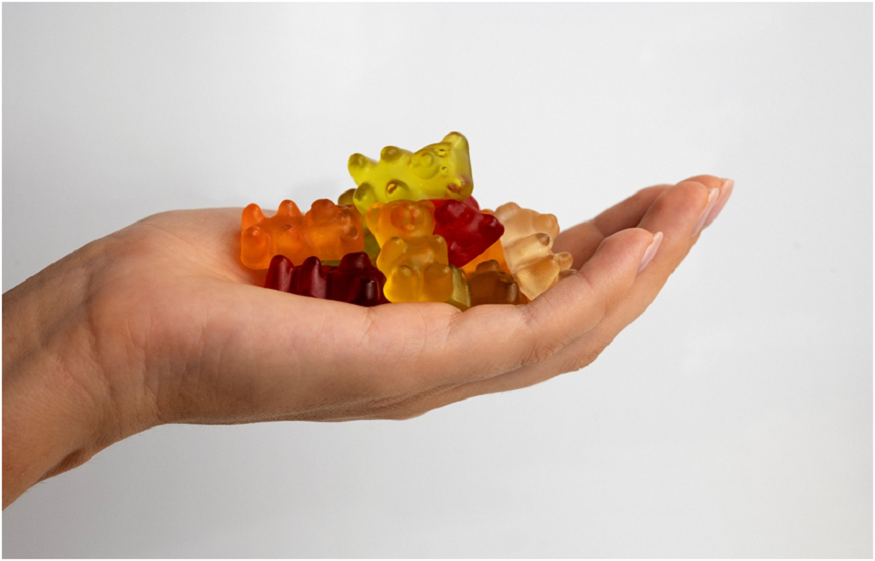Many individuals in the chronic pain arena are seeking gentle options that will fit within their daily wellness. Delta 9 gummies – specifically hemp derived Delta-9 THC – are one option that people are asking about when pharmaceuticals feel too strong or limited. While these gummies will not treat underlying conditions, some individuals are reporting noticeable comfort, improved sleep, and a calmer mood. The main thing is knowing what they can and cannot do and how to use them intentionally.
THC and Pain Research
Researchers have investigated THC’s interaction with the endocannabinoid system in the body which helps with pain signaling, mood and sleep. Early, and ongoing research shows THC may help with certain types of discomfort; particularly, neuropathic pain and inflammatory pain, through changing how pain messages are processed. That said, response to THC varies from person to person; and also, considerations of dosing, formulation and timing are important.
Because gummy products are a form of cannabis edible; gummy effects take longer to onset and potentially last longer compared to smoking and vaping products. The longer duration may indeed help with nighttime relief or steady comfort through the daytime, however, is also more likely that someone could take too much if they re-dose too soon. For those readers looking for accessible overview resources, that describe Delta gummies, please check this plain-language resource: https://fameimpact.com/what-are-delta-gummies-should-you-use-them-where-to-get-them/ . Any research-informed approach to using cannabis should involve medical oversight, particularly for people taking other prescriptions or living with complicated medical conditions.
Delta 9 for Muscle Relief
Muscle tension, spasms and post-activity soreness are common occurrences in chronic pain. There are people who use Delta 9 gummies with hopes they can provide appropriate, steady relaxation, without the “harshness of stronger sedatives”. When used prudently, a low dose might help “let go” muscle tension, perceived tension, and promote sleep, all of which are important factors that can make pain feel worse when we ignore or overlook them.
Before you experiment with any new cannabinoids, many of us will undoubtedly consider some of the practical tips like the right timing, dose size and product type. Once we have established those basics, we often think about scenarios that may be useful for gummies to shine:
- An evening wind-down scenario, where muscle guarding is keeping us unwound and therefore unable to settle into sleep as easily. When a lower dose is administered with the intention of sleep, the body’s transition to sleep may have calmer behavior.
- Gentle recovery after being active or completing physical therapy, where relaxing the body’s tension will be a valuable addition to other recovery techniques like heat, stretching or massage.
- An occasional bout of stress-related tightness, where microdosing the gummies (extremely small amounts) may help to take the “edge” off tightness without fully intoxication.
Inflammation and Cannabinoids
Inflammation is a common player in many pain conditions. THC interacts with CB1 and CB2 receptors that modulate the immune and neural pathways. THC is not a classic anti-inflammatory in the sense that we may be familiar with in NSAIDs (click here for more details), but consistent, prudent users sometimes report an overall reduction in soreness and improvement in movement after regular use. The effects may not be more instantaneous than other pain medications, but the regularity of the effects might be additive when combined with rest, movement and hydration.
Many users will provide anecdotal evidence that combining cannabinoids is useful. For example, CBD and THC synergy—sometimes referred to as the entourage effect—may provide broader support than THC alone. Full-spectrum hemp extract products contain minor cannabinoids and terpenes that may modulate the experience. These might enhance comfort while still permitting modest dosing and individuals sensitive to THC often try products that equalize CBD and Delta 9, and soften the intensity.
Natural Approaches to Discomfort
Delta 9 gummies may fit into a more holistic, whole-you approach. People who see the best results usually make a small number of lifestyle changes in tandem with careful use of one or two gummies. Having two or three supportive habits makes the difference between some relief or a good experience oractually making larger steps forward in recovery.
Simple, manageable tactics may include:
- Consistent sleep hygiene to encourage positive habits, and support the body’s repair processes, especially if nighttime flares have become a habit.
- Gentle movement (stretching, tai chi, short walks) as able to help reduce stiffness and promote circulation over time.
- Heat/cold/topical balms as needed so oral support from gummies is not shouldering all the heavy lifting.
- Stress management techniques—breathing exercises, short mindfulness sessions, journaling—to help dial down pain amplification in the nervous system.
Supportive habits can also mix nicely with hemp-derived Delta 9 THC products and allow smaller doses and fewer side effects for many people.
Can Gummies Replace Painkillers?
For some, Delta 9 gummies reduce day to day discomfort enough to cut back on OTC pills (like Tylenol). For others, particularly people with chronic pain with more sever or unstable conditions, and possibly hospitalization history, gummies are adjunct therapy—not replacement therapy. Gummies can help with sleep quality, muscle relaxation, and perceived pain, but should not replace urgent care, post-surgical care instructions, or disease modifying therapies.
Medical consultation is prudent. THC interacts with the sedative properties of other substances, some antidepressants, and blood thinners, or medications that affect heart rhythm or blood pressure. A clinician can help you not only with limit setting on dose but on careful observation for increased side effects (dizziness or anxiety) and coordination of care. In short, cannabis edibles can be one tool—something many find useful, but some will find insufficient—but the safest route involves careful dosing, clear communication with health care providers, and ongoing self-care.

